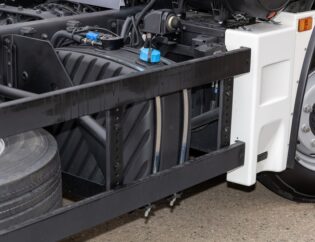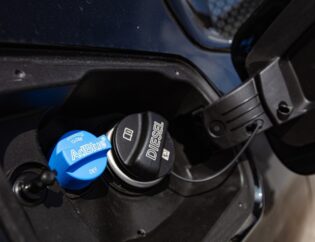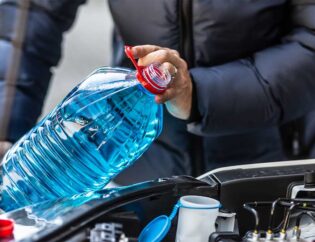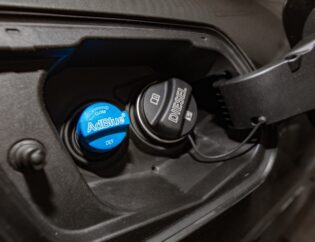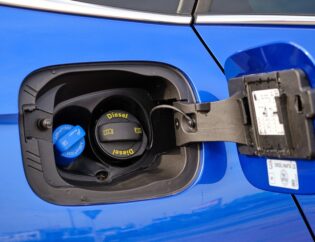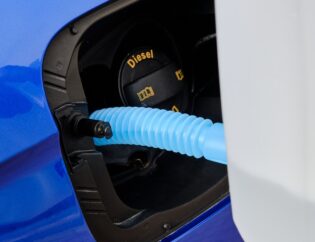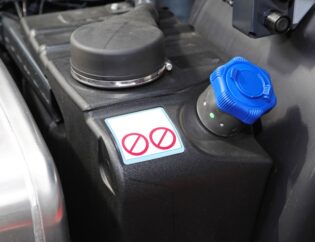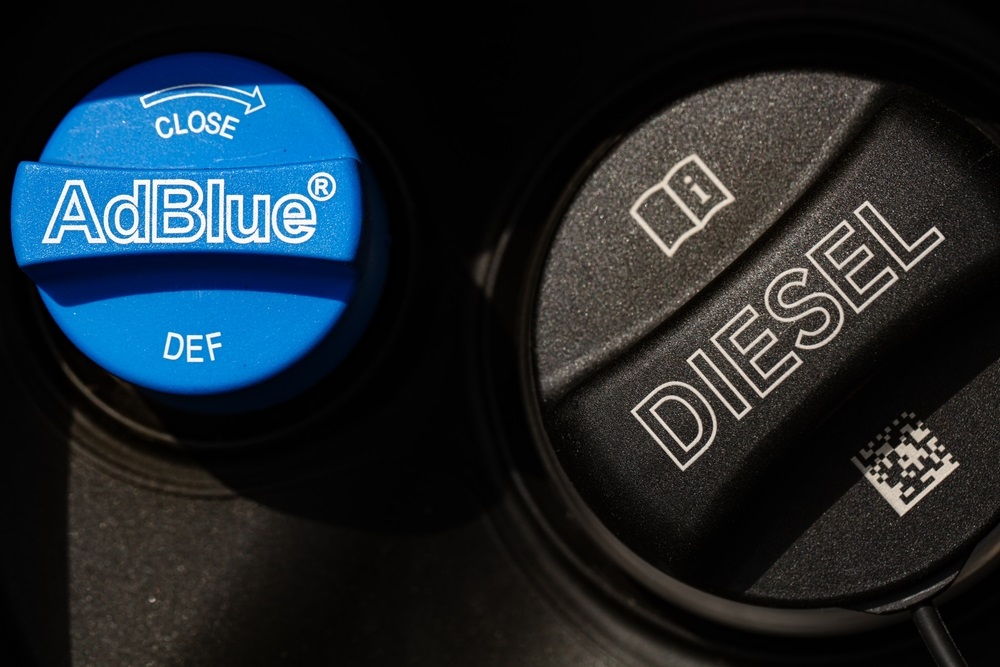
Diesel engines have long been the workhorses of transportation and industry, providing immense power and efficiency. However, they also produce harmful nitrogen oxide (NOx) emissions, contributing to air pollution. Modern diesel engines use Diesel Exhaust Fluid (DEF) or AdBlue in selective catalytic reduction (SCR) systems to address this concern and minimize NOx emissions. In this article, we will look in-depth at the Diesel Exhaust Fluid Composition and how it aids in curbing harmful emissions. Let’s dive in!
Contents
- 1 What is Diesel Exhaust Fluid (DEF)?
- 2 Diesel Exhaust Fluid Composition
- 3 50% Urea-Aqueous DEF
- 4 Diesel Exhaust Fluid 32 (DEF)
- 5 Diesel Exhaust Fluid 40 (DEF)
- 6 How Diesel Exhaust Fluid (DEF) Works
- 7 The Significance of Diesel Exhaust Fluid (DEF) in Modern Diesel Engines
- 8 The Chemistry Behind Selective Catalytic Reduction (SCR) Technology
- 9 Environmental Impact and Sustainability of Diesel Exhaust Fluid (DEF)
- 10 Frequently Asked Questions (FAQs)
- 11 Conclusion
What is Diesel Exhaust Fluid (DEF)?
DEF is a non-hazardous solution made of urea and deionized water. It is a clear, colorless liquid that resembles water and is used in diesel engines with SCR technology. When DEF is injected into the exhaust stream, it reacts with NOx emissions to convert them into harmless nitrogen and water vapor. This process helps diesel engines comply with stringent emission regulations, making them more environmentally friendly.
Diesel Exhaust Fluid Composition
DEF is formulated with precision to ensure its effectiveness in reducing NOx emissions. It typically consists of:
1. Urea (NH2CONH2)
Urea is the primary active ingredient in DEF, comprising about 32.5% of the solution. It is a nitrogen-rich compound derived from natural sources, such as ammonia and carbon dioxide. Urea plays a vital role in the SCR process by breaking down NOx emissions into nitrogen and water vapor through chemical reactions.
2. Deionized Water
Deionized water makes up the remaining 67.5% of DEF. Water has been purified to remove impurities and ions, ensuring the solution’s quality and preventing contamination in the SCR system. The purity of water is crucial for the proper functioning of DEF and SCR technology.
50% Urea-Aqueous DEF
50% Urea-Aqueous DEF is a less concentrated DEF solution. It contains 50% urea and 50% deionized water. This type of DEF offers several advantages, including cost-effectiveness and a lower freezing point, making it suitable for colder climates. However, it may require more frequent refills due to its lower urea concentration.
Diesel Exhaust Fluid 32 (DEF)
DEF 32, with a urea concentration of 32.5%, is the most common type of DEF used in diesel vehicles. It is formulated to meet the exacting requirements of SCR systems and provides efficient NOx reduction. DEF 32 is readily available at most automotive supply stores and fueling stations.
DEF 32 is widely preferred due to its compatibility with various diesel engines and SCR systems. It also has a longer shelf life, making it convenient for vehicle owners. Its standardized composition ensures consistent performance and emission control.
Diesel Exhaust Fluid 40 (DEF)
Diesel Exhaust Fluid 40, with a urea concentration of 40%, is a high-performance DEF variant. It offers enhanced NOx reduction capabilities, making it suitable for heavy-duty diesel engines that require superior emission control. However, DEF 40 may be less readily available compared to DEF 32.
When using DEF 40, it’s essential to ensure that your vehicle’s SCR system is compatible with the higher urea concentration. Consulting your vehicle’s manual or manufacturer is recommended to avoid potential issues.
How Diesel Exhaust Fluid (DEF) Works
Understanding how DEF works is essential to grasp its impact on reducing harmful emissions in diesel engines. The SCR system involves the following steps:
1. Injection of DEF
When the exhaust gases leave the engine, DEF is injected into the exhaust stream, usually as a fine mist. The heat from the exhaust causes the water in DEF to evaporate, leaving behind solid urea particles.
2. Ammonia Generation
As the urea particles decompose, they release ammonia (NH3). Ammonia is a crucial component in the SCR process, as it facilitates the conversion of NOx emissions.
3. NOx Reduction
A chemical reaction occurs as the exhaust gases and ammonia pass through the SCR catalyst. The NOx emissions react with ammonia to form nitrogen (N2) and water vapor (H2O), which are harmless to the environment.
4. Improved Air Quality
By converting NOx emissions into harmless components, DEF significantly reduces the environmental impact of diesel engines. This process produces cleaner air, reduced smog, and improved air quality.
The Significance of Diesel Exhaust Fluid (DEF) in Modern Diesel Engines
Implementing DEF and SCR technology has been a game-changer for modern diesel engines. Here’s why DEF is of great significance:
1. Environmental Benefits
DEF enables diesel engines to comply with stringent emission regulations, such as those outlined by the Environmental Protection Agency (EPA) and the European Union (EU). Reducing NOx emissions contributes to combatting air pollution and its associated health hazards.
2. Fuel Efficiency

The use of DEF enhances the efficiency of diesel engines. The engine can operate optimally by facilitating NOx reduction through SCR, improving fuel economy, and reducing operational costs.
3. Engine Longevity
When paired with DEF, the SCR system helps prevent the build-up of harmful deposits within the engine. This leads to cleaner engine operation and improved longevity, reducing maintenance requirements.
4. Global Adoption
With the growing awareness of environmental issues, DEF has gained widespread acceptance worldwide. It has become an integral part of the automotive and industrial sectors, ensuring cleaner emissions on a global scale.
The Chemistry Behind Selective Catalytic Reduction (SCR) Technology
The success of DEF in reducing NOx emissions can be attributed to the underlying chemistry of SCR technology. Understanding this process will shed light on how DEF works synergistically with SCR.
1. Catalytic Reactions
SCR involves a series of catalytic reactions where the SCR catalyst plays a crucial role. The catalyst provides a surface for the chemical reactions, facilitating the conversion of NOx emissions into harmless nitrogen and water vapor.
2. The Role of Ammonia
As mentioned earlier, ammonia is generated by the decomposition of urea in DEF. It acts as a reducing agent, breaking down NOx emissions into nitrogen and water. The SCR catalyst ensures that this reaction occurs efficiently, promoting cleaner emissions.
3. Optimal Temperature Range
The SCR process is most effective within a specific temperature range, typically between 200°C and 400°C. The reaction may not occur efficiently at lower temperatures, leading to incomplete NOx reduction.
4. Diesel Engine Control Systems
Modern diesel engines have sophisticated control systems that monitor exhaust gas temperature, pressure, and other parameters to ensure optimal performance. These systems regulate DEF injection to maintain the conditions for SCR to function optimally.
Environmental Impact and Sustainability of Diesel Exhaust Fluid (DEF)
Implementing DEF and SCR technology has had a significant positive impact on the environment and sustainability. Let’s explore its effects:
1. Reduced Greenhouse Gas Emissions
By curbing NOx emissions, DEF indirectly helps reduce greenhouse gas emissions. Nitrogen oxides significantly contribute to climate change, and their reduction contributes to mitigating its effects.
2. Smog Reduction
NOx emissions are one of the primary components of smog, which can lead to respiratory problems and other health issues. Reducing NOx through DEF results in cleaner air and improved public health.
3. Enhanced Air Quality
DEF has been crucial in improving air quality in urban areas and industrial regions. Cleaner air leads to healthier living conditions and a better quality of life for people in these areas.
4. Sustainable Solutions
The adoption of DEF aligns with the global shift toward sustainability. As nations and industries strive to reduce their environmental footprint, DEF offers a practical and effective solution to address diesel engine emissions.
Frequently Asked Questions (FAQs)
Is DEF the same as diesel fuel?
No, DEF is not the same as diesel fuel. DEF is a separate fluid used to reduce NOx emissions in diesel engines with SCR technology, while diesel fuel powers the engine.
Can I use any urea solution as DEF?
DEF must meet strict quality standards set by regulatory bodies like the American Petroleum Institute (API) and the International Organization for Standardization (ISO). An incorrect or low-quality urea solution can damage the SCR system and lead to non-compliance with emission regulations.
Is DEF harmful to the environment?
DEF is a safe and non-toxic solution that minimizes environmental impact. Its primary role is to reduce harmful NOx emissions and promote cleaner air quality.
How often do I need to refill DEF?
The frequency of DEF refills depends on the vehicle’s fuel consumption and NOx emission levels. Most modern diesel engines have a DEF indicator that alerts the driver when it’s time for a refill.
Can I mix DEF with other substances?
No, DEF should never be mixed with other substances, as it can compromise its effectiveness and cause damage to the SCR system. Using only pure, certified DEF is essential to ensure optimal performance.
Is DEF available worldwide?
DEF is readily available in various countries, especially regions with stringent emission regulations. You can find DEF at fuel stations, automotive supply stores, and dealerships.
Conclusion
Understanding Diesel Exhaust Fluid Composition is vital in appreciating its role in reducing harmful emissions from diesel engines. By leveraging SCR technology, DEF helps convert NOx emissions into harmless nitrogen and water vapor, leading to cleaner air and improved environmental sustainability. The global adoption of DEF showcases its significance and the commitment of industries and individuals to curb air pollution and promote a cleaner future.
Discover the power of cleaner emissions with Azure’s Premium Diesel Exhaust Fluid! Upgrade your diesel engines with the most effective and eco-friendly solution available. Our Diesel Exhaust Fluid (DEF) is meticulously formulated to meet the highest quality standards, ensuring optimal performance and reduced nitrogen oxide emissions. Get a quote today!

